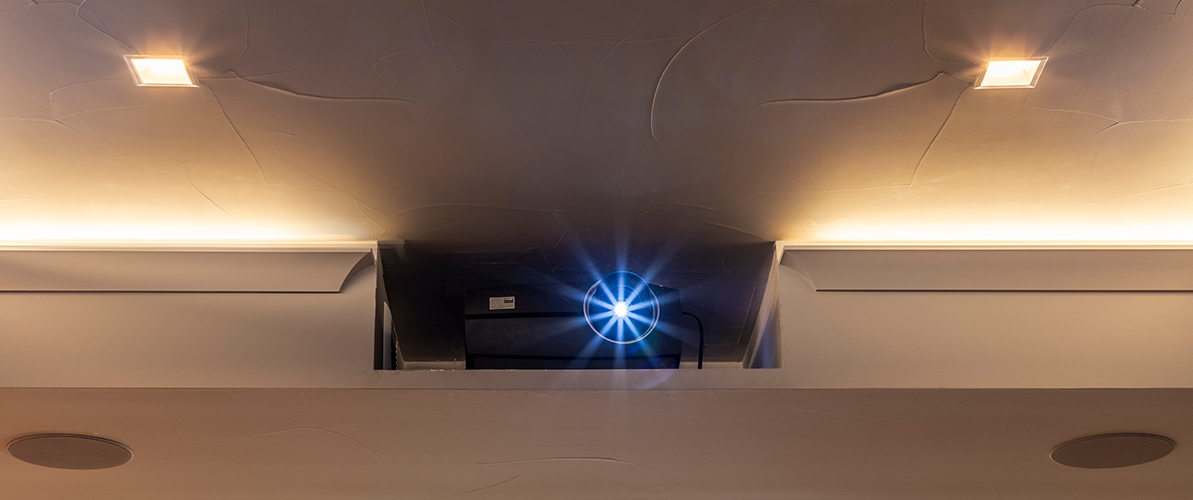
What is the difference between a bulb and a laser projector?
For your home theater, getting the right tool to provide the image is essential. You may have seen ads for lamps, lasers, and short throw projectors. What is the difference, and when should you use each?
Lamp Projectors
Many home theaters started with Lamp Projectors. A good example is Sony VPL-VW715ES 4K HDR Home Theater Projector. The source of light in this system is a high-pressure mercury lamp.
These bulb projectors tend to be cheaper and may be more cost-effective for a low-use projector. They provide a good color quality and are easy to use. The bulbs or ‘lamps’ are replaceable but may be expensive – they can cost between $90-$500 depending on the projector. Most projector lamps last between 1,500 and 2,000 hours which might sound like a lot, but if you forget to turn it off, it could be less than 6 months. Also, because they take time to warm up, people have a habit of leaving them on. That means you either need to learn to change the lamp or have someone do it for you. You know when the lamp is going because the picture color and brightness will fade and change.
Laser Projectors
The next step up may be a Laser Projector – a newer technology than Lamps. An example of this is the Sony VPL-XW5000ES 4K HDR Laser Home Theater Projector.
Laser Projectors have no lamp replacement or maintenance costs but still have a lifetime, and when that’s up, you need to replace the whole unit. Replacement is required after 20,000 hours or 8 hours a day, five days a week, 50 weeks a year; it will last for ten years. As Laser projectors have instant on and off, we are encouraged, unlike Lamp projectors, to turn them on and off between uses. Over time Lasers don’t slowly fail the way lamps do, ensuring precision color accuracy and stability. They tend to have better energy efficiency, but all these benefits come at a cost. They will be a little more expensive.
Short Throw Projectors
The latest product is a Short throw like the Samsung 120" Class LSP7T 4K Smart Laser Projector.
Short Throws projectors work well when there is a short distance between the projector and the screen. They often are used in smaller meeting rooms or classrooms where it's hard to build an entire home theater. Depending on the space and the surface you will place the projector on, they can also be placed in bedrooms and living rooms.
Most models can create 100-inch image sizes four feet from the screen – that might sound a lot, but a good home theater may have a screen double that size. Also, because you tend to place them on a surface instead of installing them – they often get moved and need adjusting. Short-throw projectors are often worth the extra price for those who have the money. They save space and are often the only option for small rooms or rear projection setups.
How many Lumens do I need?
The Lumen is the standard unit of measurement for light, like how the degree is the unit of measure for temperature. How many you need will be based on the room. Is it dark, like cinema dark? If so, around 1,000-1,200 lumens should be enough.
The bigger the screen, or if you like having some lights on without ruining the picture, a brighter lamp is a good idea. Something around 2,000 lumens should be bright enough to compete with standard indoor lighting or bleed-over from closed windows. You should not need anything over 3,000 lumens unless you plan to watch the projector in fully lit spaces.
So, it all comes down to the screen size and ambient light. If you want to know what would work in your space, give BRAVAS a call; we would love to walk you through it.




